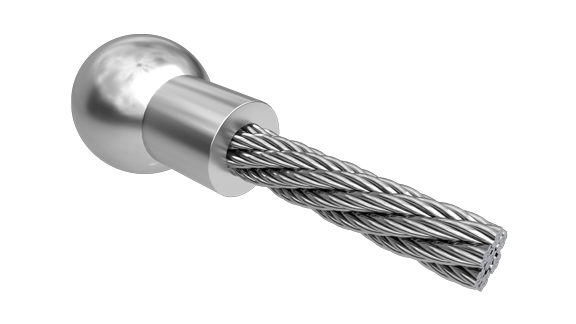Understanding the benefits
From custom crimps and threaded fittings to midsection attachment points and end terminations, mechanical assemblies enable wire-based products to meet the needs of complicated applications. Our integrated operations and Engineering teams will help you streamline your manufacturing process and find the perfect solution.
Typical end uses
When you're designing a custom mechanical assembly, you define the end uses. We've seen our customers put their designs to work in:
- Articulation devices
- Laparoscopic or robotic surgery devices
- Minimally invasive surgical instruments
Design specifications
Mechanical assemblies can be as basic as adjusting the ends of cut-to-length strands and cables or as complicated as creating custom terminations and midsection fittings.
When you need HHS® tube, strands, or cables cut to length, we use the following end treatment options to ensure they arrive ready for use.
HHS® tube end treatment options
- Band weld
- Face weld
- Shear cut
- Square cut
Strands and cable end treatment options
If you're trying to find the best strand or cable for your application, you can learn more about different alloys and constructions here. When you need those strands or cables cut to length, we use the following end options to ensure they arrive ready for use.
- Bead and swage
- Beaded
- Encapsulated
- Fused end
- Shear cut
- Square cut
Mechanical assembly components
To make choosing the right components for your assembly easier, you'll find information about different fittings below to help you prepare for a conversation with our New Product Development engineering teams.
Fittings
|
|
Ball and shank spherical
|
 |
Ball spherical
|
|
|
Clevis end
|
|
|
Cylindrical, hexagonal, and square end stop
|
 |
Flanged stop
|
|
|
Looped
|
|
|
Puck
|
|
|
Radiused end stop
|
 |
Threaded
|
End treatments
|
|
Band weld
|
 |
Bead & swage
|
 |
Beaded
|
 |
Bullet nose
|
 |
Coining
|
 |
Deburr
|
 |
Encapsulated
|
 |
Face weld
|
 |
Fused end
|
 |
Shear cut
|
 |
Shrink tube
|
 |
Square cut
|
Additional processing capabilities
Our mechanical assemblies can be further customized with additional processing, such as:
- Coating is available in dieletric or lubricious options, can yield a variety of benefits, from providing electrical insulation to chemical separation or improved lubricity
- Laser ablation is a non-mechanical process for removing coating from select sections on a wire, meaning you get clean, undamaged wire exposed in just the right places
- Hypodermic tubing
- Thin tube to add stiffness and pushability where needed
- Customizable in size and tensile strenght
Unable to load the form? Click the button below:










